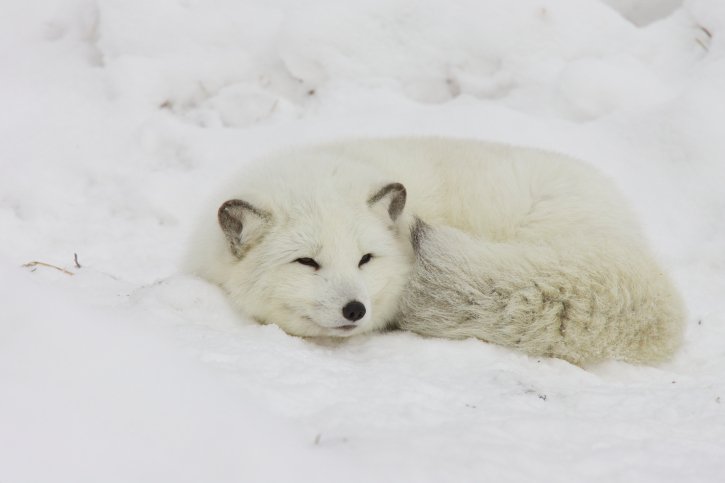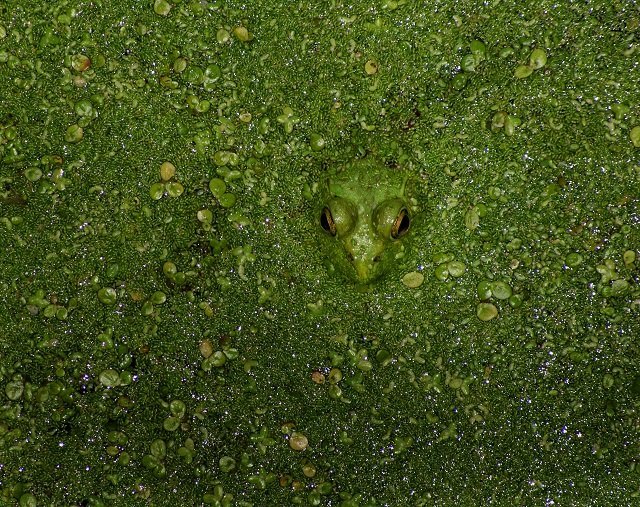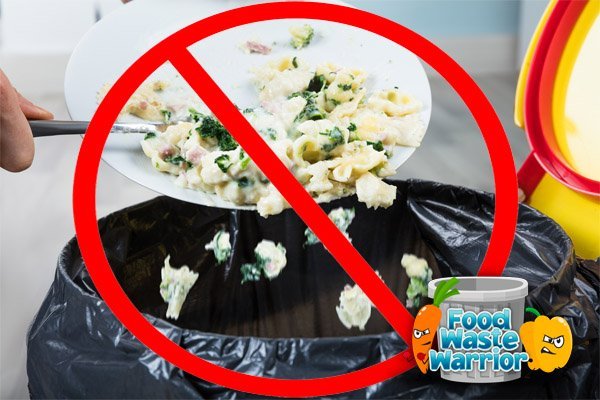Ever wondered which arctic animal you’re most like? Take this quiz to find out who would play you in the movie version of your life. Let us know what animal you got by leaving a comment below. Annnnnd ACTION!
Pixel Puzzler #2: Guess the Animal, Part 2
Last week, we posted the first clue in our Pixel Puzzler challenge and we got lots of great guesses. Let’s see how many of you know what animal this is now that the picture has gotten a little clearer.
![]()
Think you’ve got it? Click here to find out if you’re right!
Looking for more fun stuff? Come up with a funny caption, take a quiz or watch a cool video!
Don’t forget that commenting on articles helps you level up on your Earth Rangers Journey! You only need 5 comments to reach Level 3 and 15 to reach Level 5. All comments are moderated, so your comment won’t be visible until we’ve had a chance to check that it’s squeaky clean.
The Power of the Sun
The sun may be 150 million km away, but it has a lot of potential sunshine power here on Earth! Solar energy is a type of energy that we get from the light and heat of the sun.  Using the sun’s energy doesn’t create any pollution and is therefore great for the planet!
Using the sun’s energy doesn’t create any pollution and is therefore great for the planet!
There are a few different types of solar energy:
Photovoltaic (fo-to-vol-ta-ik) energy is electricity generated by the sun’s light (photons) shining on a solar panel. Solar panels are really just a bunch of photovoltaic cells stuck together, which are very good at absorbing tiny bits of solar energy and converting it into power that we can use. Some watches and calculators are powered by tiny photovoltaic cells instead of batteries, and did you know that solar panels are also used by astronauts to power space stations? Stellar!

Thermal (heat) energy technology captures the same photons, changing light from the sun into heat that powers a generator and makes electricity. Not only can this type of technology help keep your house warm during a cold winter’s night, it can also be used to heat the water coming through your tap.
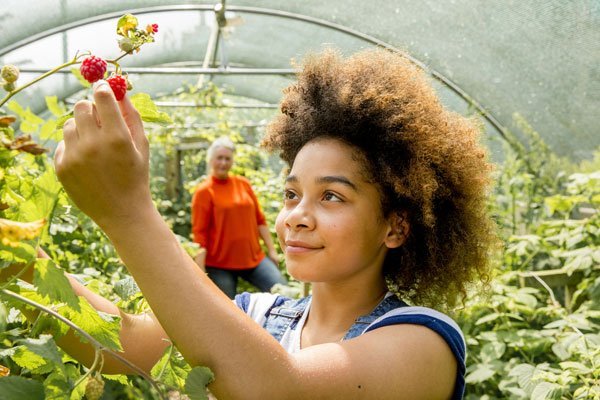
And finally, have you ever stepped into a greenhouse and instantly felt warm? Well, this is called passive thermal energy, the easiest form of solar energy we can use because there isn’t any machinery or technology involved. The sun shines through the clear walls of a greenhouse and naturally heats up the space. But it’s not just greenhouses; some buildings (and animals) also take advantage of this heat!
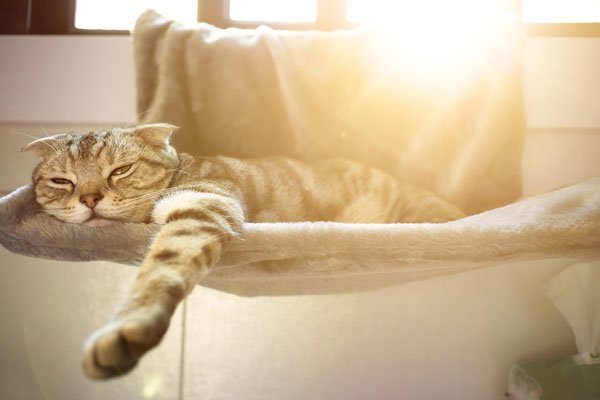
Did you know that the sun produces enough energy in just 1 hour to equal all of the energy humans need in a whole year? We think the planet is bound to have a bright future with this renewable energy source.
Check out other types of renewable energy!
Generously sponsored by:

Sources:
https://www3.epa.gov/climatechange//kids/solutions/technologies/solar.html
http://www.thecanadianencyclopedia.ca/en/article/solar-energy/
9 Sea Creatures Who Are Out of This World!
These sea creatures are so alien-like that we can’t believe they aren’t from outer space! But, believe it or not, all of these animals can be found right here on planet Earth! Check out these 9 sea creatures who are out of this world!
1. Feather Star

These crazy looking marine animals wave their “feathers” to get around underwater. They like shallow water, but they can sometimes be found on ocean floors up to 9 km below the surface of the water! Swirling their many feathered legs in the water, we can almost imagine what they’d look like floating through the starry galaxy.
2. Glaucus Atlanticus

The glaucus atlanticus, aka. the “blue dragon” is a type of stinging sea slug! They actually float upside down on the waves: their blue bellies face up to match the surface, and their silver backs face down to blend in with light shining down. To us, they look like surfing UFO’s!
3. Mantis shrimp
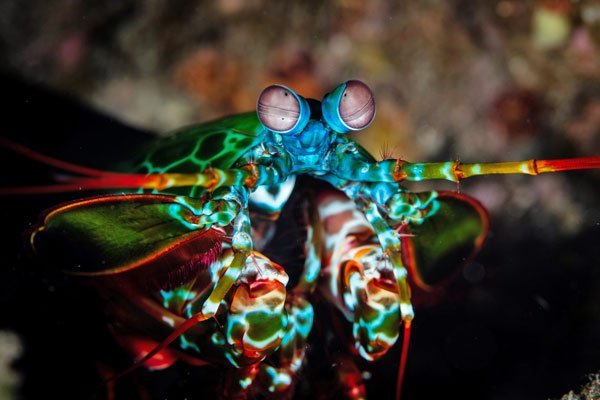
These exotic rainbow warriors may be small but they’re extra mighty crustaceans. Their glowing green backs, red legs, bulging eyes, and long antennas certainly make the mantis shrimp one of the most alien-looking creatures on the planet!
4. Scotoplanes
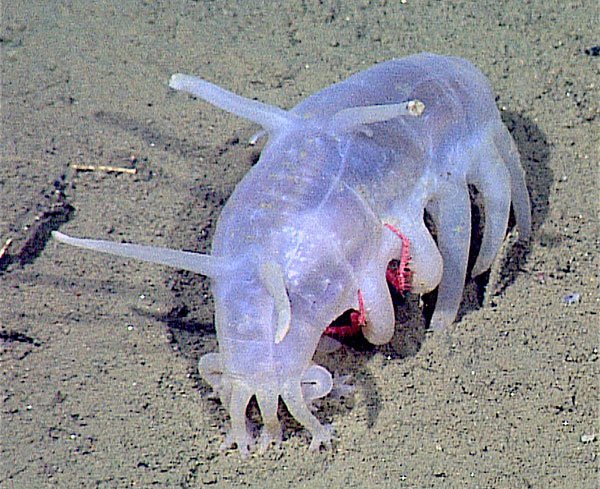
5. Dumbo Octopus

6. Leafy Sea Dragon

Apparently, not everything that’s leafy grows on plants! You may find this hard to believe, but the leafy sea dragon is actually a type of fish! If you squint your eyes you might be able to see their resemblance to a seahorse, but we think that these guys could fit in just fine on Neptune.
7. Hairy Frogfish

If it’s called a frogfish, does that make it a frog… or a fish? The answer is kind of a combination! Though they’re officially fish, they actually walk along the sea floor on their bottom fins in search of a tasty meal. They may look like monsters in great need of a hairbrush, but the hairy frogfish is actually amazing at hiding and can even change colors to match his surroundings! Sounds like some extraterrestrial powers could be at play here…
8. Granrojo Jellyfish
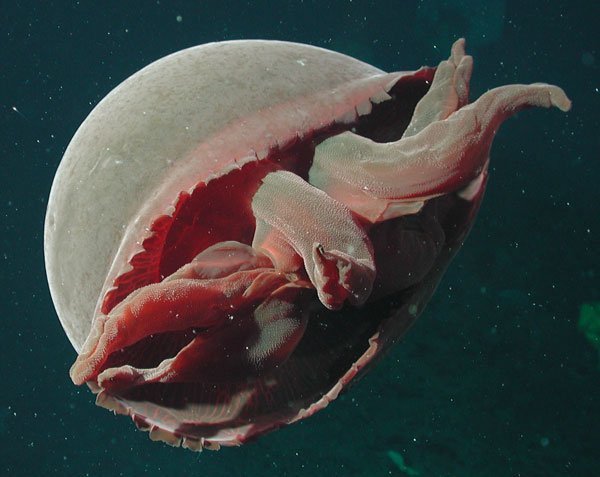
9. Sarcastic Fringehead
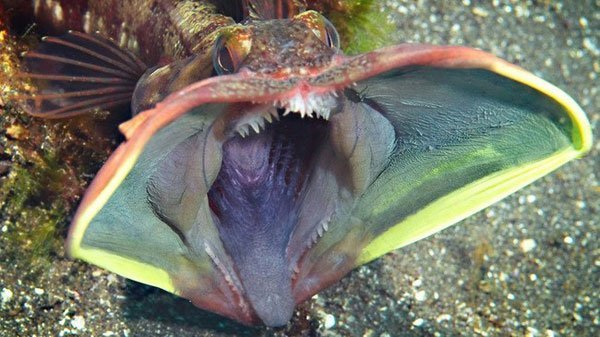
Which of these underwater creatures do you think is the coolest? Let us know in the comments below!
Pixel Puzzler #2: The Great Reveal
We’ve gotten tons of great guesses on Part 1 and Part 2 of the Pixel Puzzler, and now it’s time for Part 3. Are you ready for the great reveal and to find out if you got it right?
The answer to this Pixel Puzzler is (drum roll please) SNOWY OWL!
![]()
Did you know that…
– the snowy owl in this picture is female. You can tell because this owl has black markings, while males are nearly all white.
– they are live near the Arctic circle in Canada, Alaska, Scandinavia, Greenland, Iceland and Russia
– they are classfied as Least Concern on the IUCN Red List
– they love to eat rodents like lemmings but they will also eat other mammals (up to the size of a hare) and birds.
https://www.arkive.org/snowy-owl/bubo-scandiaca/
Did you guess the right answer? Let us know in the comments below!
Looking for more fun stuff? Come up with a funny caption, take a quiz or watch a cool video!
And check out the Earth Rangers Podcast for even more cool animal facts!
Don’t forget that commenting on articles helps you level up on your Earth Rangers Journey! You only need 5 comments to reach Level 3 and 15 to reach Level 5. All comments are moderated, so your comment won’t be visible until we’ve had a chance to check that it’s squeaky clean.
Your Next Mission: Scavenger Hunt Showdown
Being outside is great for relaxing, getting in touch with nature and de-stressing, but it’s also a place for fierce competition and the perfect spot for your next Mission: Scavenger Hunt Showdown!
Calling all scavenger hunting pros, nature lovers and explorers! It’s time to team up with a friend, neighbour, or family member and go head-to-head against some of Earth Rangers’ most memorable Mission characters for the best scavenger hunt ever!
When you accept this Mission, you’ll get the official Scavenger Hunt Showdown Checklist, filled with all sorts of things for you to search for on your scavenger hunt. See if you can find the tallest tree or animal footprints. What about something that’s purple or a leaf that’s been nibbled on by a bug? And don’t forget to take a ton of pictures, especially of you with the coolest things you see.
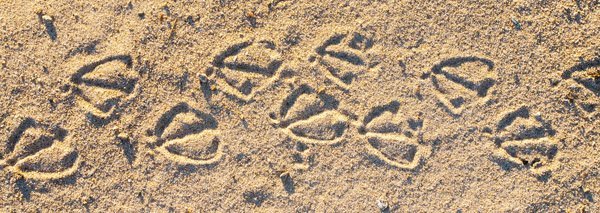
Find as many items on the list as you can and see if you have what it takes to beat Captain Conservation and Elliot Eagle, Bobby Beaver and Sam Shoreline, and the rest of the Scavenger Hunt Showdown teams!
To complete this Mission, you must:
– Head out to a local, provincial, or nationa*l park (with a grown-up of course!)
– Try to find as many of the things on the Scavenger Hunt Checklist as you can, taking lots of pictures on your adventure.
– Add up your team’s score to see if you have enough points to become the Ultimate Scavenger Hunt Champion!
– When you’re finished, report back to the Scavenger Hunt Showdown page to let us know how you did, and send us a picture of you with the coolest thing you found.
Do you have what it takes to defeat all the teams and become the Ultimate Scavenger Hunt Champion?
This mission was generously supported by:


The Power of the Wind
Wind can keep your kite afloat, create massive waves and even bend trees in half, but did you know that the wind can also provide power to millions of homes?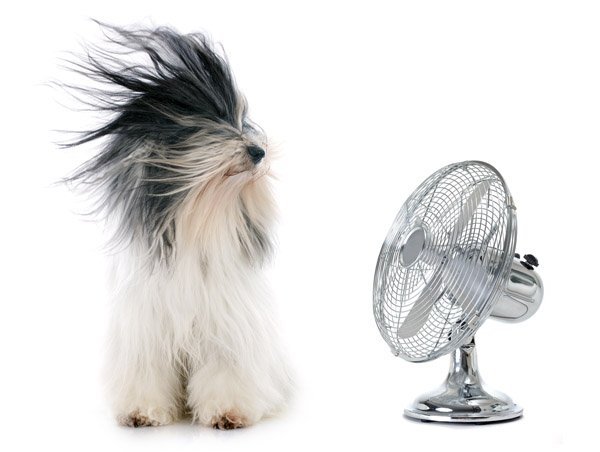
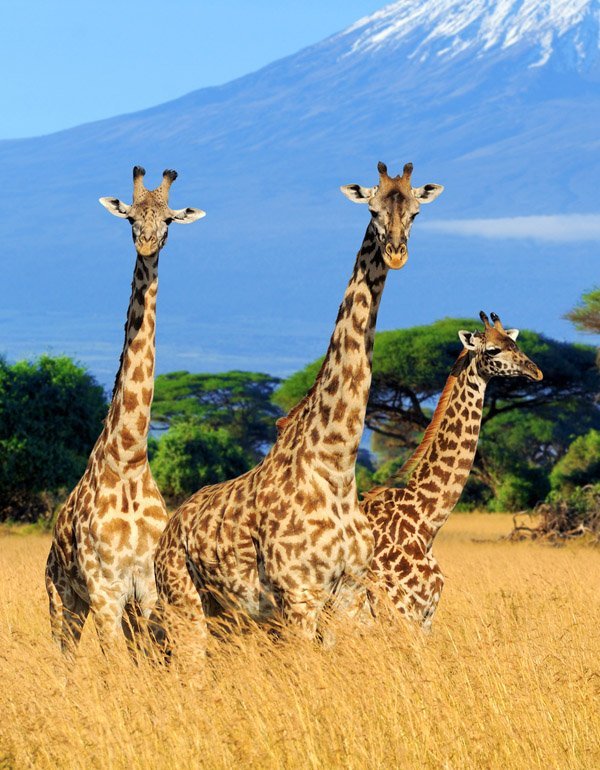 Wind energy is captured through tall machines called wind turbines. These turbines can be built as tall as a 20 storey building, and have three huge HUGE blades that reach 60 meters in length (that’s as tall as ten giraffes!). The bigger the turbine, the more electricity it can create. While some turbines are so big that they can provide power for millions of homes, they can also be built so small that they can be set up on a roof, providing enough electricity for just one house.
Wind energy is captured through tall machines called wind turbines. These turbines can be built as tall as a 20 storey building, and have three huge HUGE blades that reach 60 meters in length (that’s as tall as ten giraffes!). The bigger the turbine, the more electricity it can create. While some turbines are so big that they can provide power for millions of homes, they can also be built so small that they can be set up on a roof, providing enough electricity for just one house.
So how do they capture the wind’s energy? When the wind blows, it will start to spin the blades which are attached to a long pole in the center. This pole is attached to a motor, and once the blades are spinning fast enough, the motor creates electricity. That electricity travels through a power line from the motor to the power grid underground and from there it’s transferred to many homes in the area.
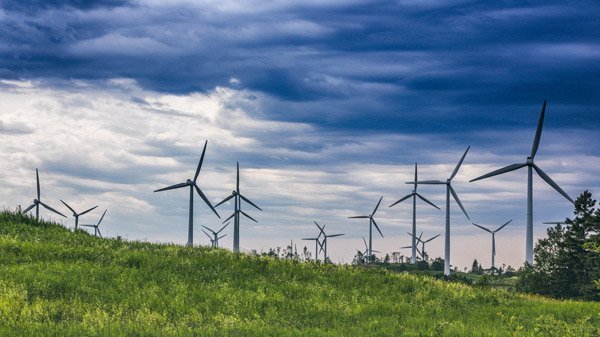
When a lot of these wind turbines are placed close to together, it’s called a wind farm, and it can light up a lot of homes. These farms are usually found on the tops of windy hills, close to the shore, and on the wide open prairies.
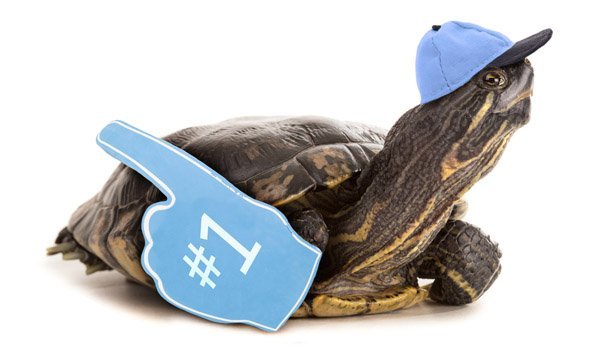
We are blown away by the power of the wind, and there is a lot of it to go around. It is great for the planet because the turbines don’t need fuel to operate, so it doesn’t create any pollution. As for this form of renewable energy, we are big fans!
Check out other types of renewable energy!
Generously sponsored by:

Sources:
https://www3.epa.gov/climatechange//kids/solutions/technologies/wind.html
http://www.thecanadianencyclopedia.ca/en/article/wind-energy/
How many animals can you find in this video?
These animals are masters of disguise and can hide in plain sight, a skill which comes in very handy when trying to avoid predators. Let’s find out how good are you at spotting these hidden creatures. Watch the video and let us know how many you found in the comments below.
Don’t forget that commenting on articles helps you level up on your Earth Rangers Journey! You only need 5 comments to reach Level 3 and 15 to reach Level 5. All comments are moderated, so your comment won’t be visible until we’ve had a chance to check that it’s squeaky clean.
There’s a new type of energy in town…and it’s green!
You may not realize it, but humans use energy every single day. We use it when driving in a car, using the microwave, and charging our cell phones or computers. It’s pretty much impossible to live without it! But step aside oil and coal, because there is a new type of energy in town – renewable energy!
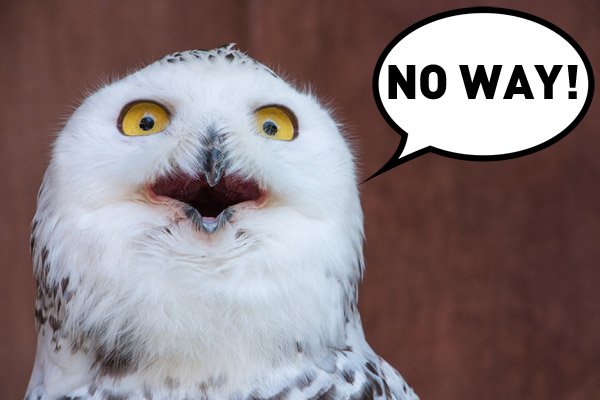
What in the world is renewable energy?
There are many ways to generate energy, and some are better for the planet than others. Take a look at the more traditional sources, like coal or oil, for example. When we use them to produce energy, they produce pollutants like carbon dioxide (CO2) and other greenhouse gases that contribute to climate change. Not only that, they are finite resources, meaning once we use them up, there won’t be anything left. When they’re gone, they’re gone.
But renewable energy, also called “green energy” or “clean energy”, is different. It’s much better for the planet because it creates almost NO pollution, and it is generated from sources that can be replaced by Mother Nature.
There are many types of renewable energy so let’s take a closer look at a few of them:

Wind energy is captured through tall machines called wind turbines. When the wind blows, the blades start to spin, causing a motor in the turbine to generate electricity. Click here to learn more!

Solar energy is energy that comes from the sun and it’s captured using solar panels. When the sun shines on solar panels, they absorb solar energy called photons, which are converted or changed into electricity. Click here to learn more!

Geothermal energy is energy that comes from the earth. With the help of special machines, we can access heat from deep in the ground and turn it into electricity to power our homes. Click here to learn more!

Biomass energy is energy created from burning organic matter, like plants, wood, and even poop! Using special technology, we can capture the heat and steam that comes from burning them and turn it into electricity. Click here to learn more!
Which type of renewable energy do you think is the coolest? Let us know in the comments below!
Generously sponsored by:

Sources:
https://www.nrcan.gc.ca/energy/renewable-electricity/7295
Your Next Mission: Food Waste Warrior
Did you know that Canadians waste $31 billion worth of food each year? But it’s not just the food that is wasted – the energy that goes into growing, packaging and transporting all that food is wasted too. Food waste contributes to changes in our environment, takes up valuable space in landfills and attracts wildlife (who can get sick from eating it). So for this Mission, we want you to become a Food Waste Warrior!
As you can see, food waste is a BIG problem. That’s why it’s so important that we pay attention to what we throw away. Now, we all waste food sometimes – like that container of cream cheese that goes bad before you’ve had a chance to finish it or the lettuce that disappears into the back of the fridge and turns to goo – but with some planning, we can really cut back on the amount of food we waste.
Your Mission: Don’t throw away any food for a whole week!
We know going a whole week without throwing away any food might sound really hard, but we’re here to help! When you accept this Mission, you’ll get a Mission brief with tips to help you on your way to becoming a Food Waste Warrior! You also get a Food Waste Tracker to will help you stay on track. As a bonus, for every day you go without throwing away any food, you’ll earn a cool reward!
And don’t forget to enter the Food Waste Warrior Cooking Contest!
The contest is now closed. Thanks to everyone who participated. Stay tuned to find out the winners!
Don’t just reheat those boring leftovers! Transform them into a new meal and it could earn you an awesome prize. First place will get the Mini Chef Prize Pack, which has is filled with all sorts of fun animal-themed kitchen tools and gadgets! Four secondary prizes will also be given away.
 We’re excited to announce our special guest judge, Chef Michael Smith! You might remember him as the judge from the What’s at Steak Cooking Contest. He has such a fun time judging the last contest that he’s back again and can’t wait to see the creative and delicious meals you come up with!
We’re excited to announce our special guest judge, Chef Michael Smith! You might remember him as the judge from the What’s at Steak Cooking Contest. He has such a fun time judging the last contest that he’s back again and can’t wait to see the creative and delicious meals you come up with!
Are you ready to become a Food Waste Warrior?
This Mission was made possible by:
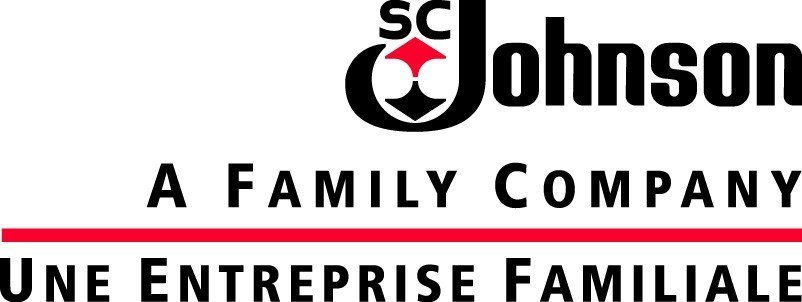
Source:
Gooch, M., Felfel, A. (2014). “$27 Billion” Revisited: The Cost of Canada’s Annual Food Waste. Value Chain Management International; Value Chain Management Center. December 10, 2014. http://vcm-international.com/wp-content/uploads/2014/12/Food-Waste-in-Canada-27-Billion-Revisited-Dec-10-2014.pdf Accessed on November 15, 2017.
Don’t forget that commenting on articles helps you level up on your Earth Rangers Journey! You only need 5 comments to reach Level 3 and 15 to reach Level 5. All comments are moderated, so your comment won’t be visible until we’ve had a chance to check that it’s squeaky clean.


